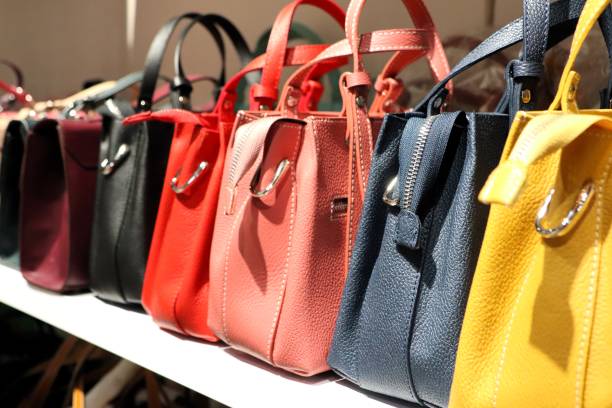How Handbags Have Evolved and Their Different Styles
Handbags come in a variety of shapes, sizes, and materials, each serving unique purposes and styles. This article delves into the evolution of handbags, highlighting classic and contemporary designs. Discover how different materials like leather, fabric, and synthetic fibers influence durability and fashion appeal. Learn about popular styles such as totes, crossbody bags, and clutches, and understand how handbags have adapted to modern lifestyles while remaining essential accessories.

Handbags have journeyed through centuries of fashion history, evolving from humble utility items to coveted fashion statements. This transformation reflects not only changing aesthetic preferences but also shifting social dynamics, technological innovations, and lifestyle adaptations. Today’s diverse handbag landscape offers something for every need and style preference, with each design telling its own story about function, form, and fashion identity.
What Makes Handbags for Women Essential Accessories
Handbags transitioned from practical carriers to essential fashion accessories through a fascinating evolutionary process. In medieval times, both men and women carried small pouches attached to belts, primarily for coins and small personal items. As women’s clothing evolved to include fewer pockets in the 17th and 18th centuries, separate carrying vessels became necessary. These early reticules and drawstring purses were often intricately embroidered status symbols among aristocratic women.
By the 20th century, handbags had become firmly established as women’s accessories, reflecting their increasing mobility and independence. The modern handbag emerged as women entered the workforce, needed to carry more items, and sought accessories that complemented their wardrobes. Today, handbags serve multiple purposes—they’re practical containers for daily essentials, expressions of personal style, and often symbols of status or achievement.
How Designer Handbags Shape Fashion Trends
The relationship between designer houses and handbag evolution has been symbiotic and transformative. In the early 20th century, fashion pioneers like Coco Chanel revolutionized handbag design with the introduction of shoulder straps, allowing women greater freedom of movement. The iconic quilted Chanel 2.55 bag, introduced in 1955, remains influential decades later.
Louis Vuitton, Hermès, and Gucci similarly established signature styles that transcended seasonal trends to become enduring classics. The Hermès Birkin, created in 1984 for actress Jane Birkin, continues to command waiting lists and investment-level prices. Designer innovations frequently trickle down to mainstream fashion, with luxury houses establishing silhouettes, hardware details, and material combinations that influence the entire market.
Social media and celebrity culture have accelerated this trend-setting power, with designer handbags gaining instant visibility and desirability when carried by influential figures. Limited editions, collaborations, and revival of archive designs keep the designer handbag market dynamic and continuously evolving while maintaining heritage elements.
Why Leather Handbags Remain Popular Choices
Leather handbags have maintained their popularity through centuries of changing fashion trends for several compelling reasons. The material’s durability creates pieces that can last decades with proper care, often developing a desirable patina that enhances their character over time. This longevity makes leather bags both environmentally and economically sensible choices for many consumers.
The versatility of leather allows for incredible design range—from structured, formal briefcases to soft, casual hobos. Technological advancements in tanning and finishing have expanded the aesthetic possibilities, offering everything from glossy patent finishes to buttery soft suedes. Leather’s adaptability to various treatments means it can suit virtually any style preference or functional need.
Modern leather handbag production has also evolved to address sustainability concerns. Many brands now offer vegetable-tanned options, recycled leather products, and transparent sourcing information. While synthetic alternatives have gained market share, leather’s natural properties—breathability, flexibility, and inherent elegance—continue to make it a preferred material for quality handbags across price points.
When Crossbody Handbags Became Essential
Crossbody bags experienced a significant surge in popularity during the 1970s alongside the women’s liberation movement, symbolizing practicality and freedom of movement. Their hands-free design aligned perfectly with increasingly active lifestyles and the growing emphasis on functional fashion. The style saw another resurgence in the early 2000s with the rise of minimalist aesthetics and urban mobility needs.
The smartphone era dramatically increased crossbody popularity, as these bags provided perfect solutions for carrying technology while keeping hands free. Designers responded by creating specialized compartments for devices and adapting traditional silhouettes to accommodate modern necessities. The pandemic further cemented crossbody bags as essential items, with their minimal contact design and ability to carry hand sanitizer and masks making them ideal companions for cautious outings.
Today’s crossbody market spans from luxury micro bags barely large enough for a phone to capacious messenger styles suitable for work essentials. Their adaptability across gender lines has also contributed to their staying power, with many styles offering universal appeal regardless of traditional fashion categorizations.
How Tote Handbags Accommodate Modern Lifestyles
Tote bags have evolved dramatically to meet the complex demands of contemporary living. Originally simple market bags, today’s totes feature thoughtful organizational elements like laptop sleeves, water bottle holders, and secure zippered sections that transform them into mobile command centers for busy professionals. Their typically open-top design offers quick access to frequently used items while providing substantial capacity.
The rise of remote and flexible work arrangements has further elevated tote bags’ importance. Many designs now function as hybrid work-leisure bags, transitioning seamlessly between office settings, coffee shops, and social gatherings. Premium totes often feature convertible elements—removable pouches, adjustable straps, or folding sides—that adapt to changing needs throughout the day.
Environmentally conscious consumers have embraced reusable totes as alternatives to single-use bags, driving innovation in sustainable materials and production methods. From luxury leather versions to affordable canvas options, totes span all market segments while maintaining their essential characteristic: practical versatility for lives in constant motion.
The handbag market continues its dynamic evolution, responding to technological advances, lifestyle changes, and shifting aesthetic preferences. From structured classics to experimental designs, today’s diverse offerings ensure that handbags remain both functional necessities and powerful expressions of personal style. As fashion cycles continue, we can expect handbags to further adapt while maintaining their essential place in wardrobes worldwide.




